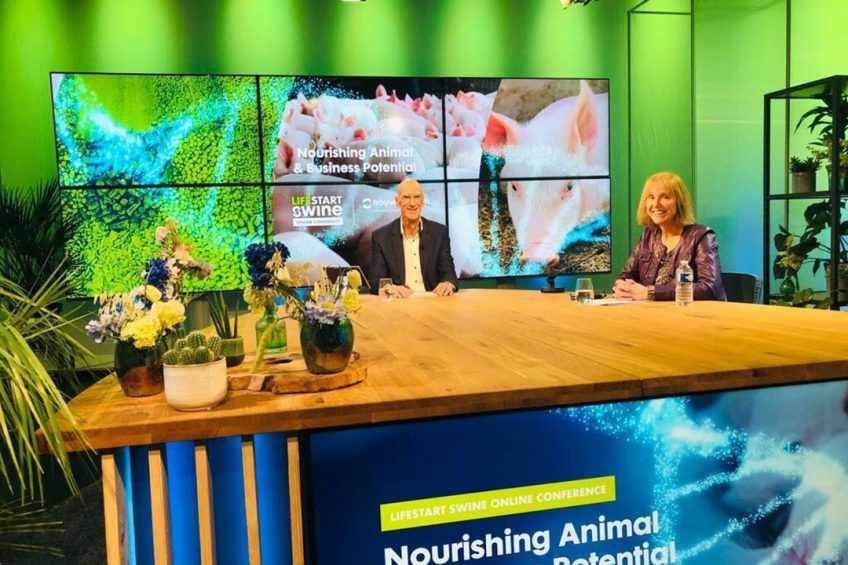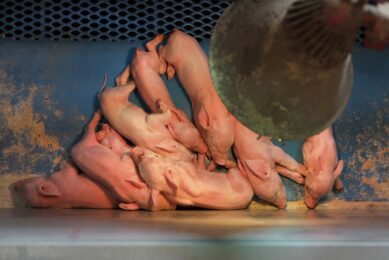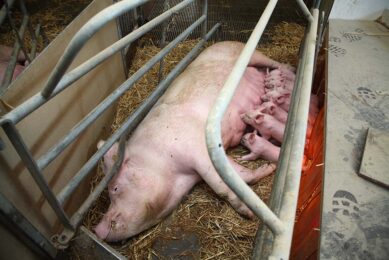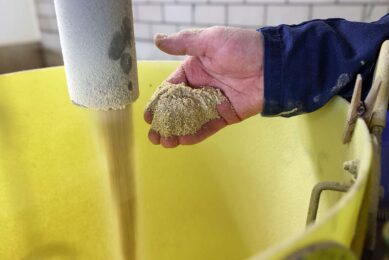Review: The importance of investing in early life of pigs

The early life of pigs is definitely worth investing in – that was the key theme of a recently held online conference. Various well-known expert speakers from around the globe emphasised the importance of pigs getting off to a good start.
The webinar, called LifeStart Swine Online Conference, discussed a number of factors influencing the production of pigs and how these can be maximised. The event was organised by Trouw Nutrition.

Early life of the pig as window of opportunity
The first speaker was Prof Dr John Pluske, Faculty of Veterinary and Agricultural Sciences, University of Melbourne, Australia, who focused on the early life of the pig highlighting this era as a window of opportunity to nourish both the animal and business potentials.
Prof Pluske discussed a holistic view of the industry, including the latest scientific insights and the role of early life in reaching piglets’ full genetic potential and maximising farms’ productivity and profitability.
During his overall conclusions he said: “The world has changed, so has the pork industry and the pork industry must continue to adapt and evolve to face the disruptions and challenges. There is more pressure, therefore, for the pork industry to be sustainable in all forms and shapes. Survival in the industry means a focus or a refocus on the basic principles of pork production, for example, biosecurity and hygiene, husbandry and management, welfare and environment and nutrition and immunity. The bottom line here is to reduce costs and increase revenue.
Sow and piglet during gestation
He continued to say, “Of critical importance here is sow and piglet nutrition during gestation, after parturition, after weaning, and evaluation of economic assessment of whole-of-life and whole-of-herd performance. In this respect, research and development is critical to face the challenges and improve business viability.”
His key take home message was that pig producers need to focus on producing, then rearing, healthier, heavier, more resilient, better performing piglets. This, he said, involves sow nutrition but also involves post-natal aspects associated with welfare and care.
 Essential role of sows in piglet performance
Essential role of sows in piglet performance
Next up was professor Dr Chantal Farmer, a research scientist in sow lactation biology at Sherbrooke R&D Centre of Agriculture and Agri-Food, QC, Canada, who looked more closely at the essential role the sow plays in terms of piglet performance. Her presentation was split into 3 key sectors; the sow’s essential role in ensuring lifelong health and performance of piglets, the influence of colostrum and the role of the mammary development.

Soon to be published: Special edition on Young Animal Feed
Giving her overall conclusions she said: “Ingesting 250g of colostrum is essential for the survival and growth of new born piglets. If they do not ingest that much they will not grow. The amount of colostrum produced by sows is very variable. The sow is actually limiting the amount of colostrum ingested by piglets.
“There are numerous factors that affect colostrum yield including animal factors from either the sows or piglets. Also, hormonal status will affect colostrum yield and one thing that is important for producers is the timing of the farrowing induction. You do not want to induce farrowing too early.”
Decreasing interval between birth and suckling
Dr Farmer continued to say, “And vigour of the litter is important because it will decrease the interval between birth and suckling and this is most important in large litters. Recent results show that giving one injection of 75 IU of oxytocin in the early postpartum period prolongs the colostral phase and improves the quality of early milk. Sow milk yield limits piglet growth. Enhancing mammary development can increase the milk yield. Sucking of a teat for two days postpartum in first parity is important for its milk yield in second parity.”

 A good beginning is half the battle
A good beginning is half the battle
Next speaker, Prof Dr Dominiek Maes, head of the unit Porcine Health Management, Faculty of Veterinary Medicine at Ghent University, Belgium, had a simple message that a good beginning is half the battle. He discussed a number of factors including the challenges, economics and opportunities of the pre-weaning, weaning and post-weaning periods. Summing up his presentation Dr Maes said: “Birthweight, piglet vitality, colostrum and milk production by the sows are imperative for further health and performance.”
Nutrition and housing conditions
“Management factors pre-weaning, such as nutrition and housing conditions, are also essential for good survival, growth, and post weaning performance. It’s unavoidable but weaning causes severe stress to the animals. There are a lot of changes and they have to cope with the loss of lactogenic immunity which exposes them to more infections. Also, I hope I have illustrated that there are a lot of different non-infectious factors that should be optimised in order to avoid losses in order to maintain optimum performance of the piglets post weaning,” he said.

Achieving healthy and more productive pigs
The last speaker was Dr Ruben Decaluwe, global technical manager, swine young animal feed, at Trouw Nutrition. Delving into research, Dr Decaluwe looked at innovations inspired to achieve healthy and more productive animals and ultimately an efficient and profitable business. He mentioned how the Trouw Nutrition LifeStart science programme helps the piglet throughout its life and the impacts it has in the later stages of life. One of his key points was that an extra 1kg of weight at 6 weeks of age can lead to an extra 2.5kg to 3.5kg market weight. That extra 1kg also means the pig can go to market three to four days earlier and means an extra € 1 to € 3 per slaughter pig profit margin.
Investing in early life of pigs
He said: “It is important to invest in early life but how do we do that? If we look to the early life period we can actually identify two critical transition periods at farrowing and weaning. There are a lot of complex multi-factors happening at these stages and each of them needs to have a proper solution to make sure that at the end of 6 weeks of age you get your proper quality piglet and as such determine your lifetime performance.
His overall take home message at the end of the presentation was that early life nutrition is important and is defined as the period from conception up until 6 weeks of age.
He added: “In the end, good early life nutrition can give you quite some benefit on market weight, on days to market but also on profit margin. There are two critical periods which actually are guiding maps within this early life period and the trick is to identify the real underlying need which is very complex and in the end finds the right solution.”
 Beheer
Beheer









 WP Admin
WP Admin  Bewerk bericht
Bewerk bericht